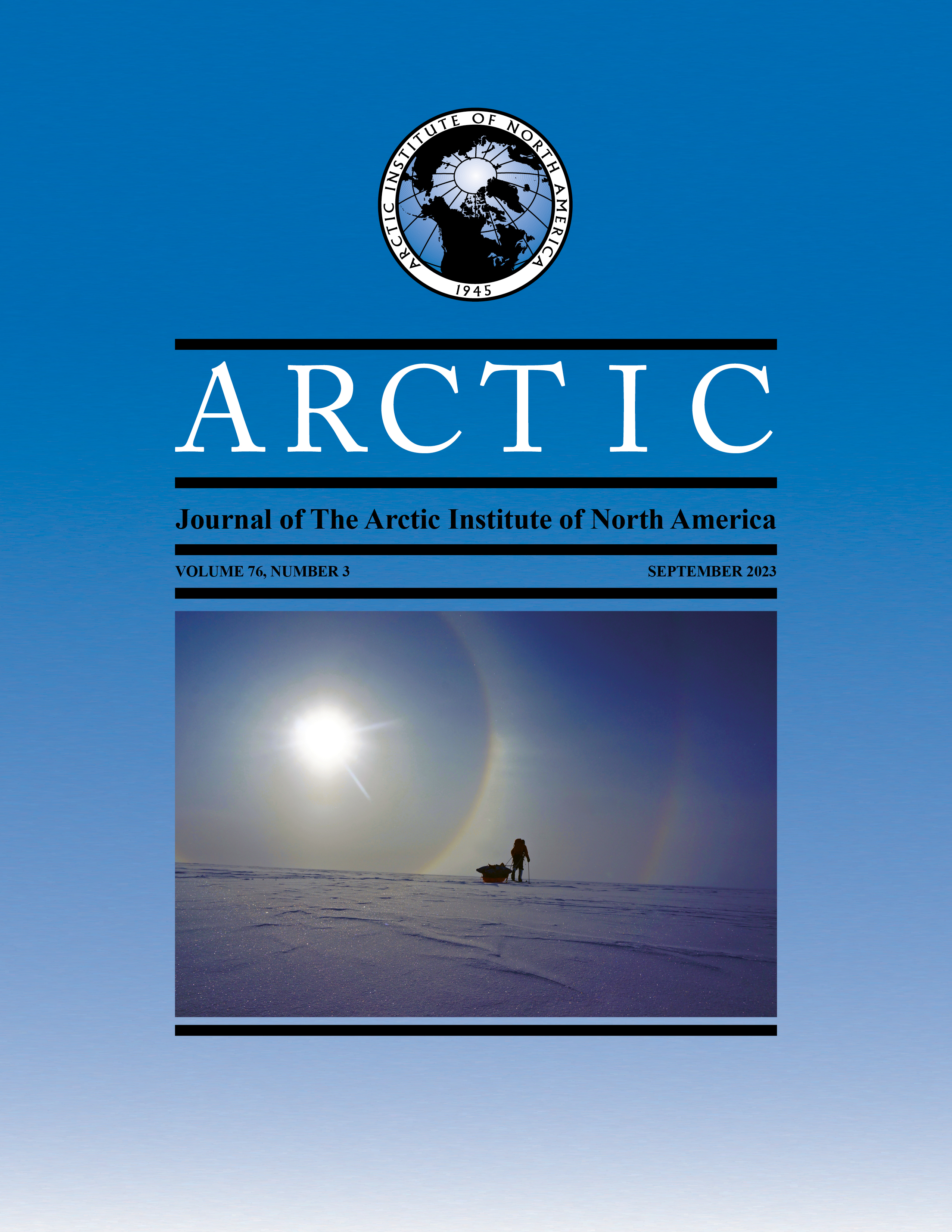Performance of Climate Projections for Yukon and Adjacent Northwest Territories, 1991 – 2020
DOI:
https://doi.org/10.14430/arctic77263Keywords:
climate change; Yukon; Mackenzie Valley; climate scenarios; temperature; precipitation; engineering design; infrastructure foundationsAbstract
The design of permafrost foundations now takes into account the impact of climate change on soil bearing capacity, as exemplified in the 2019 Canadian Standards Association (CSA) guideline CSA PLUS 4011:19. To date, however, no guidance exists to help developers discern which climate scenarios would be most prudent for adoption in this design area. We have compared climate change scenarios that were outlined in 2003 for the design of the proposed Mackenzie Gas Project with climate data for 1991 – 2020 in order to determine the projections that are most representative of what did, in fact, occur. In Canada, the greatest change in climate during the last 50 years has been measured in the western Arctic where fluctuations in annual air temperatures are regionally consistent. The rate of change in annual mean air temperature for 1971 – 2020 has ranged from 0.77˚C decade-1 at Inuvik, NT, to 0.30˚C decade-1 at Komakuk Beach, YT, with warming concentrated in winter. No statistically significant trends in total annual precipitation have been observed, and these records are poorly correlated within the region. In 2003, in the context of MGP design, a specially assembled group of scientists and other experts examined 29 climate projections from seven global climate models; these scenarios were revisited separately in 2005 to support research into forest fires in Yukon. Based on our analysis, the observed climate warming in Yukon and adjacent Northwest Territories during 1991 – 2020 was close to the upper projections for mean annual and winter air temperature. For example, at Inuvik, the 2.3˚C increase observed in mean annual air temperature between 1961 – 90 and 1991 – 2020 exceeds the median projection for change by 2010 – 39 of +1.6˚C and approaches the upper value of +2.4˚C. Our analysis did not determine any consistency between observed and projected precipitation. These results indicate that, when required, developers concerned with future projections of temperature in northwest Canada may prudently adopt more extreme scenarios because these have been the most realistic to date. The results also imply that near-surface permafrost may soon become unsustainable in southern parts of the region, so site investigations to locate thaw-stable soils will likely be cost effective for new projects.
Downloads
Published
Issue
Section
License
Copyright (c) 2022 ARCTIC

This work is licensed under a Creative Commons Attribution 4.0 International License.


